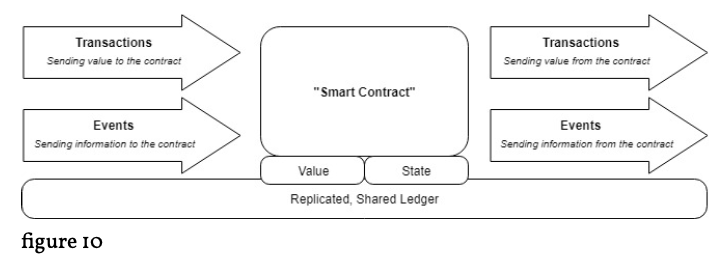
. . . However, external value which is being attached to the BC disbalances the system. The incentive for hackers to attack the network raises while the number of network participants and nodes stays constant at the same time which, at least in theory, proves as a security risk. When applying the principle of smart contracts onto crypto-assets and smart property new advantages emerge. With the help of smart contracts and their variations “we now have the capacity to assign digital representation to any store of value, including creative content, physical property, and intangible assets” (Casey & Vigna, 2018, p. 14). Now conditional sale contracts which ensure a parallel enforcement of the transaction become possible. Contracts could be programmed in a way to only release funds when the goods ordered are received in a satisfactory condition.4 This eradicates potential downsides of the pure asset linkage to the BC. In common non BC system nowadays this works with the help of a centralized entity. They will hold the payment from Person or Company A until Person or Company B delivered the respective object. Only then will the payment be forwarded to Person B. With this ap- proach, . . .
4Hansen & Kokal, 2017.